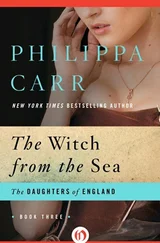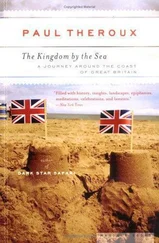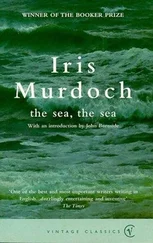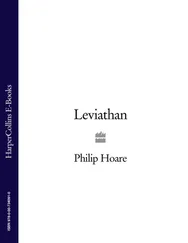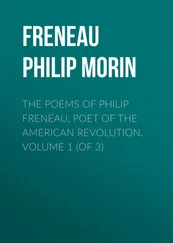As with so many things about birds, you have to take a lot on trust; to discern what is real, and what they want you to believe. The pattern of a duck’s feathers, for instance, breaks up the surface, blurring its body between water and sky, an effect that prompted the American artist Abbott Thayer to suggest eye-dazzling camouflage for First World War soldiers and ships, mimicking natural cover in an industrial war. A grebe’s markings, intensely detailed against the grey of the sea, may seem darkly obvious to us, but from below, its white throat and breast renders it invisible, able to deal death with its stiletto bill. Thayer called this disguise ‘counter-shading’; it lends animals from birds to whales a flat deception in the overhead sun, making them seem insubstantial rather than solid things.
As they emerge from their dives, I realise that there are half a dozen birds patrolling, moving into their winter haunts. From their own level, in the water, I feel accepted, or at least tolerated – any bird will have seen you long before you see it. I’m too far away to see the grebe’s blood-red eyes, although there’s a suggestion, even at this distance, of the outrageous ruffs which once supplied Edwardian society with stolen plumage. But then, grebe parents will pluck out their own feathers to feed their chicks, lining their young stomachs against fish bones.
The tide ebbs, and the birds assemble, as if someone had laid the table and called them in to dinner. Gulls and geese are already working the shoreline, as are the oyster-catchers, in their white winter ‘scarves’. They’re one of my favourite birds: familiar, stalwart, forever looking out to sea.
Untrue to its name, imported from its American cousin, the Eurasian oystercatcher eats mostly mussels and cockles teased from the shore, using its greatest asset: a bone-strengthened bill, part hammer, part chisel, able to prise open the biggest bivalves. Delicately coloured carrot-red to toucan-yellow – it might be made of porcelain – it is a surprisingly sensitive probe. At its tip are specialised Herbst corpuscles that allow the bird to sense its prey by touch as well as sight; an oystercatcher can forage as well by night as by day. Perpetually prospecting the beach, it stabs and pecks or ‘sows’ and ‘ploughs’, altering its methods to suit its prey. It can even change the shape of its bill – the fastest-growing of any bird – morphing from blunt mussel-blade to fine worm-teaser in a matter of days.
Living and dying by its wits, the oystercatcher has evolved to take advantage of its environment. It has been present on Southampton Water for centuries, if not millennia: graffiti’d into the sixteenth-century plaster wall of the port’s oldest house is an oystercatcher, a scratchy Tudor cartoon of an animal familiar from the nearby shore. In 1758, Linnaeus classified it as Haematopus ostralegus – blood-footed oyster-picker – but in Britain, where it was prized as a dish, it was called sea pie and was reduced to near-extinction in some southern sites. In modern times the birds were seen as threats to cockle beds: from 1956 to 1969, some sixteen thousand were shot in Morecambe Bay alone.
My oystercatchers, if you’ll forgive the proprietary tone, may feed and roost here, but they nest as far away as Belgium and Norway. They’d do well to steer clear of France, where hunters still shoot two thousand of them every year for recreation, sometimes ten times that many. These monogamous animals have complex social structures and can reach forty years or more, the longest-living wading bird. And they always return here, where they feel most at home. Their peeping calls drift over the water as they fly in low formation, wings emblazoned with white streaks. They settle to forage on the tideline, occasionally breaking into indignant arguments.
I raise my binoculars. I spy on them, they spy on me, one eye always on the stranger. As I watch, they’re joined by ringed plovers. The skittish newcomers bank in synchronised circles, suddenly swerving as if they’d hit some unseen current, then performing a deft communal turn to land. As they do so a gull takes off clumsily, lurching into their flight path and causing them to scatter. Rapid wings rev into reverse. All of a sudden, they’re on the ground, camouflaged bodies merging into the mud.
As timid as they are, the plovers are unfazed by the ever-present carrion crows that have established themselves here, a black-flapping backdrop in the car park. Overnight they’ll empty the bins like delinquent dustmen, leaving the tarmac strewn with the guilty evidence of their scavenging. Surveying the drifting fish-and-chip wrappers, they avert their eyes as if to say, ‘It wasn’t us.’ Although my books tell me that they’re solitary animals, they gather here in a great fluid flock of two hundred or more. Perhaps they’re evolving into aquatic birds, just as the gulls have moved inland to rubbish tips and shopping precincts.

There are other worlds of communication going on here, unknown orchestrations of action. Every so often the crows will rise up in waves, bird-shaped holes in the sky. They’re a lustrous lack of colour, denuded of detail; a fluttering negation, as dark as the night. Ted Hughes, who made a new myth of the crow, saw the bird as suffering everything even as it suffers nothing. Encouraged by its ugly name, we indict its assemblies as ‘murders’; yet crows mark the passing of one of their number in funereal demonstrations, cawing their grief in the way elephants and whales mourn their dead.
These ignored birds – whose ubiquity only makes them less visible – display the fascinating behaviour of their family. Broad-shouldered males swagger from one leg to another. Using their thick, oiled-ebony beaks, they peck over stones so much more dexterously than a wader or a gull. There’s a determined, discretionary air to their epicene foraging, although actually they’ll eat almost anything. They seem surprised if you stop and look at them, as though no one had bothered to do so before. They stare back briefly, abashed, then turn away, unable to believe that anyone other than their own might find them interesting. Or perhaps there is disdainful pride in that sideways glance, assuming the reverse: that they are the most intelligent of all birds.
As indeed they are. Raptors may be more majestic, songbirds sing more sweetly, waders are more elegantly poised, but corvids such as crows and ravens exceed them all in matters of the mind.
You can see it in their body language. They’re full of character, with their grizzled, quizzical stances; individuals, possessed of particular attributes. Their eyes glitter and their heads swivel with curiosity, ever alert to what is going on around them. Bold and twitchy, timid and territorial, their restlessness is a sure sign that something is going on in their heads. Singly or en masse, they react to every sound and movement. They’re always aware of what the others are doing: fighting, preening, competing, conspiring, minding each other’s business to see if it can be outdone. If a fight breaks out between two of them, the others will swoop in from the trees around to see what’s going on, like children in the playground chanting Fight, fight, fight . They’re irredeemably nosy, socially-adjusted birds.
Crows appear crafty to our eyes, since we seem to find intelligence in any other species than our own suspicious (I write all this down in my policeman’s notebook, as if I were about to arrest one of the avian young offenders). They’re an alternative community over our heads; gypsy birds, a mysterious race with their own hinterland. They live on the periphery in the way that all animals do, existing on the same plane as we do but inhabiting another time and space. They even have their own voices, resembling the patterns of human speech: captive corvids can be taught to speak as well as, if not better than parrots; it is one reason why they were said to be carriers of dead men’s souls. Acting in loose unison, at some unspoken signal they will fly out of the woods and onto the shore, as if they were the spirits of the monks evicted from their dissolved abbey. No one really knows what they do or how they think. Perhaps theirs is just a convenient congregation, only motivated by food and sex. But then, you might say the same about us. As a species, we are unable to resist the temptation to impose our own failings on animals; it’s almost an act of transference, and I’m as guilty as anyone else.
Читать дальше



